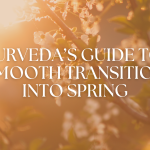Introduction:
Parkinson’s is caused by weakening of the dopamine-based functions in the central nervous system. Dopamine is an important neurotransmitter that fine-tunes and coordinates our movements and other activities through various pathways. Parkinson’s disease is characterized by uncontrolled movement of the limbs, tremors, sleep disturbance, difficulty speaking, doing fine movements, loss of balance, undesired weight loss, and more. Symptoms start subtle tremors and loss of coordination; then grow and spread over-time as the disease progresses.
By the time, these symptoms appear the disease has already progressed between 60-80%.(1)
While this may be scary, “60-80%” also speaks to the body’s resilience to the disease; that is the body’s ability to adapt and try to maintain balance before disease becomes symptomatic. This resilience is the best hope for those to suffer-from or are at risk of having this disease.
Ayurvedic Perspective:
In more modern terms, disease begins with dysregulation of metabolic pathways that nourish and cleanse the nervous system. Additionally, increase of oxidative stress result in wear-down, degeneration of local tissues along the dopamine-based neural pathways. These are represented by the “Lewy bodies” found in the microscopic analysis diseased tissue.(2) These “Lewy bodies” are found in the immune cells. These immune cells are likely the final, failed attempt of the body to clean up the damaged pathways.
In simple Ayurvedic terms, Parkinson’s disease is a condition of Vata aggravation. Outside of genetic pre-disposition, the disease is caused by factors that promote dysregulation of certain neural pathways. In Ayurvedic terms, these factors are characterized by dryness, degeneration, wear-down (roughness), and rigid qualities of the Vata dosha. This internal degeneration results in the outer dysregulation represented by increased movement, tremors, loss of sleep, etc. all demonstrating overactivity of the Air element.
Ayurvedic Approach to Treatment:
Treatment is focused on the Vata balancing in all aspect the individual’s physiology and lifestyle. This involves balancing the qualities of dryness, degeneration, roughness, rigidity, and hypermobility. As balancing qualities, Ayurvedic treatments of Parkinson’s bring a moistening, rebuilding, smoothing, softening, and stabilizing qualities to the suffering body. These qualities are introduced through therapies, herbs, diet and lifestyle to give body more resources to counteract the disease.
This may be easier said than done. The qualities of Vata that are expressed through the physical body and motor nervous system, also influence the mind and personality of the individual. For example, dysregulation might happen because people tend to push themselves to work hard, working long hours, skipping meal or over-eating, missing sleep or sleeping at irregular times, staying busy due to worry or anxiety. Rigid ideals about self might force people be perfectionist, self-critical, or tend to be forceful about getting things right or doing the right thing. For an individual, who is used functioning this way and gaining a lot of benefit from staying busy and pushing hard, it might seem counter-intuitive to slow down, focus inward or soften.
Panchakarma: Ayurvedic Therapies for Parkinson’s
Panchakarma is an important part of treating a difficult and complex disease like Parkinson’s. Considering, neurological damage is fairly advanced when the symptoms appear; also, toxic lewy bodies and other degenerative protein plaque has taken hold of neural pathways, treatment begins with a deep cleanse. This is followed by body and internal therapies to help nourish and restore the body/mind/spirit.
Panchakarma begins with invoking metabolic pathways that actively breakdown and digest toxins and removal toxins with the aid of a detoxing teas; a step called Deepana/Pachana. Medicated ghee is added to drive the cleansing process across the blood-brain barrier; this step is called Snehapana. Combinations of these first two steps open pathways of elimination that help draw toxins to organs of elimination: kidney, liver, gallbladder, etc. A third step, Virechana, is done after adequate preparation. In Virechana, herbal purgatives help eliminate drawn out toxin through the colon. These three steps complete the movement of toxins from their point of origin to point of elimination. Once this flow is started, deeper therapies are undertaken.
In the next stage, we introduce vata balancing body therapies and internal therapies. Body therapies include:
Abhyanga/swedana: oil massage of the whole body with calming, grounding and nourishing herbs. This oil massage gives the body stabilizing nourishment through the largest organ in the body, the skin. It also nourishes the nervous system by stimulating the sensory nerves. Thus, having a calming effect on the central nervous system.(3) Sweat therapy (Swedana) is applied immediately following Abhyanga to give a warming and cleansing stimulus to the nervous system.
Shirodhara(4): Oil drip therapy applied to the forehead of the patient. The oil drip evokes a sensory calming effect by exclusively activating the sensory nerves of the forehead area, frontal lobe of the brain and the pineal gland. Pineal gland is the master regulatory gland that support production of GABA, a calming neurotransmitter. It also regulates the dopamine pathways of the body. Remember, dopamine is a neurotransmitter that fine-tunes and coordinates our movements and other activities through various pathways.
Njavarakhizi: this rice and milk bolus therapy is applied for nourishing the musculoskeletal tissue in addition to nervous system. It is like directly feeding the body through the skin. With herbs like Bala, Sida cordifolia, in the milk decoction, this therapy supports rebuilding and regeneration of tissues that are worn down by constant movement associated with Parkinson’s Dz.
Internal Therapies include:
Nasya(5): Nasya therapy is the application of herbal oil through the nose. Nasya is applied to nourish the frontal lobe of the nervous system and has a positive effect on the pineal gland. It supports a calming effect on both of these parts of the nervous system and promotes optimal function.
Sneha Basti(6): This is the name for oil enemas given during Panchakarma. Oil enemas are specifically designed to nourish and support the bowels. The deeper effect of this therapy is on the nervous system that is present in the gut. Sesame oil serves as a pre-biotic to promote healthy flora, while herbs infused in the oil promote calming effect on the nervous system. It also promotes healthy productions of neurotransmitters including serotonin, GABA and dopamine.
The therapies applied in Panchakarma are specifically designed for providing the nourishing, stabilizing, moistening, softening and soothening effects. These are qualities of kapha that help to balance the Vata. Warming effect is applied through steam therapy done with the abhyanga, as well as fomentation that goes with Njavarakhizi. Specific oils and herbs applied through these therapies based on desired effect. Additionally, each panchakarma is designed on an individual basis to match the constitutional needs of the patient.
In treating as deep and complex disease like Parkinson’s, the cleansing and restorative actions of a well designed panchakarma jump-starts the healing process. This healing process may continue for many months or year following the Panchakarma, with the aid of herbs, diet, and lifestyle interventions. These aspects of Ayurvedic approach to treating Parkinson’s Disease will be addressed in a following Article.
Reference:
Hauser RA. “Parkinson’s Disease” Medscape, Aug. 29th, 2019. <https://emedicine.medscape.com/article/1831191-overview#a1>
Olanow CL, et la. “Lewy-body formation is an aggresome-related process: a hypothesis.” The Lancet, Neurology, Volume 3, Issue 8, August 2004, Pages 496-503
Wankhade SS and Thorwat VK. “Scientific Significance of Abhyanga.” Deerghaayu International Journal, Vol. 33-1, Issue 129, Pg., 31 Jan-March 2017
Kajaria D, et al. “An Appraisal of the Mechanism of Action of Shirodhara” Annals Ayurvedic Med. 2013 : 2(3) P. 114-117.
Vivera MJ, et al. “The effectiveness of Ayurvedic oil based nasal instillation (Nasya) medicines for the treatment of facial paralysis (Ardita): a systematic review protocol.” JBI Database of Systematic Reviews & Implementation Reports 2013;11(12) 33 – 44.
Shaik RB and Kumar DRS. “Mode of Action of Vasti in Neurological Disorders (Vata Vyadhi) – A Conceptual Study”, International Journal of Ayurvedic and Herbal Medicine 6:5 (2016) 2339 –2344.




